The team from Ocean University of China carried out high-precision measurements of the dynamic profile of the ocean atmospheric boundary layer, by using a coherent Doppler wind lidar developed by a Leice. The continuous profile observations of the sea atmosphere boundary layer were achieved, revealing its spatiotemporal evolution characteristics. The Lidar technology have broad application prospects, as powerful scientific analysis tool in the fields of ocean aerodynamics research, ocean visibility analysis, sea fog monitoring and warning, parameterization of sea atmosphere prediction models, and coupling analysis of ocean atmosphere interactions.
The research results have been published in the top journal of the American Geophysical Society, Journal of Geophysical Research: Atmospheres. The first author is Dr. Wang Xiaoye, and the corresponding author is Associate Professor Dai Guangyao.
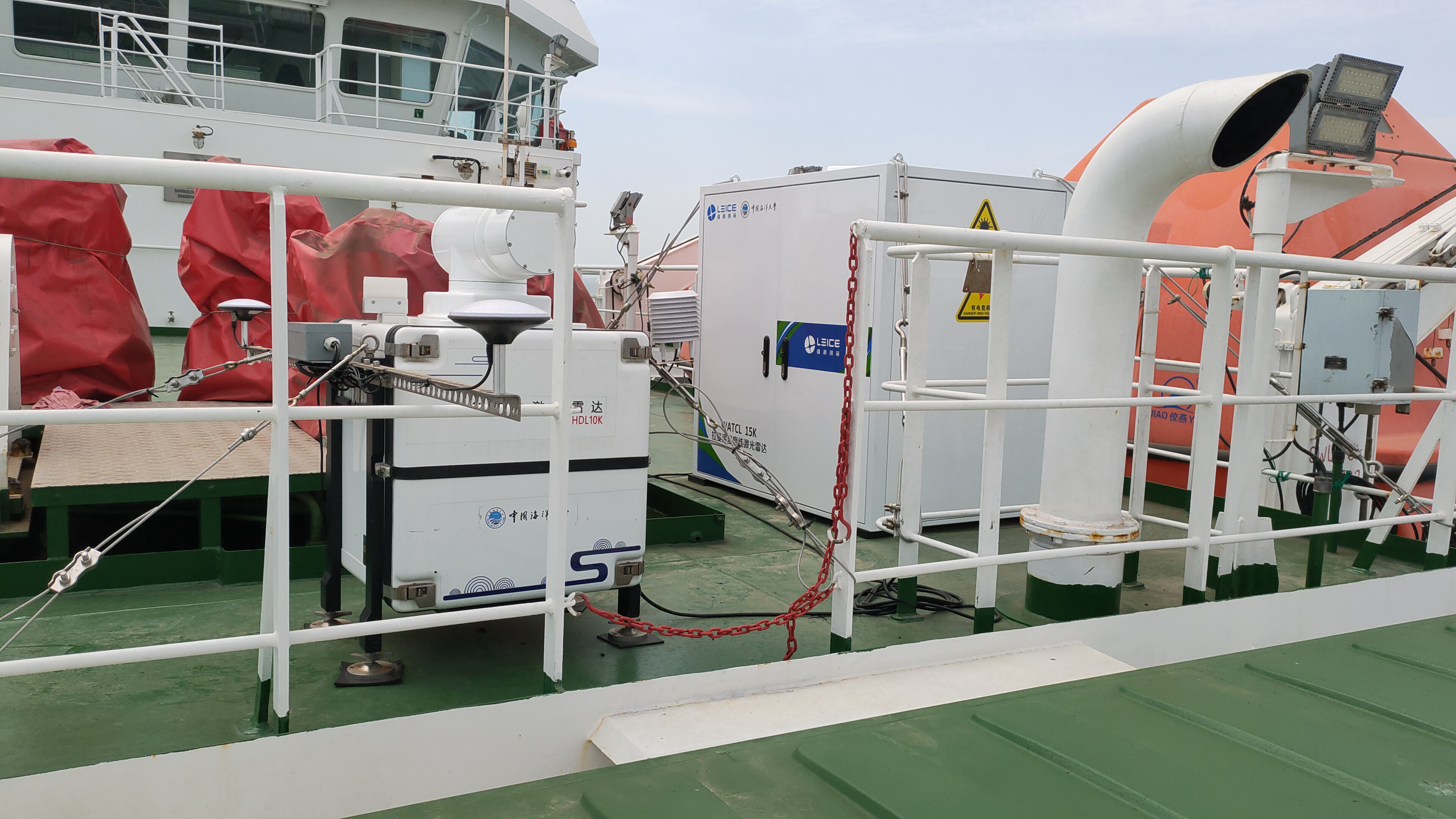
Research Background and Significance
The turbulent mixing process in the maritime atmospheric boundary layer affects atmospheric circulation by changing the vertical distribution of momentum, heat, and numerous atmospheric components, and then affects the movement of upper layer seawater and temperature and salinity distribution through driving effects. It is a frontier and hot topic in the study of sea air interaction.
Due to the complexity and spatiotemporal variability of turbulent mixing, as well as the constraints of the harsh observation environment and high observation costs at sea, it is technically challenging to conduct continuous detection of the three-dimensional wind field and turbulent characteristics of the atmospheric boundary layer at sea through vertical profiles, in order to gain a deeper understanding of the turbulent mixing driving process.
Observation Area
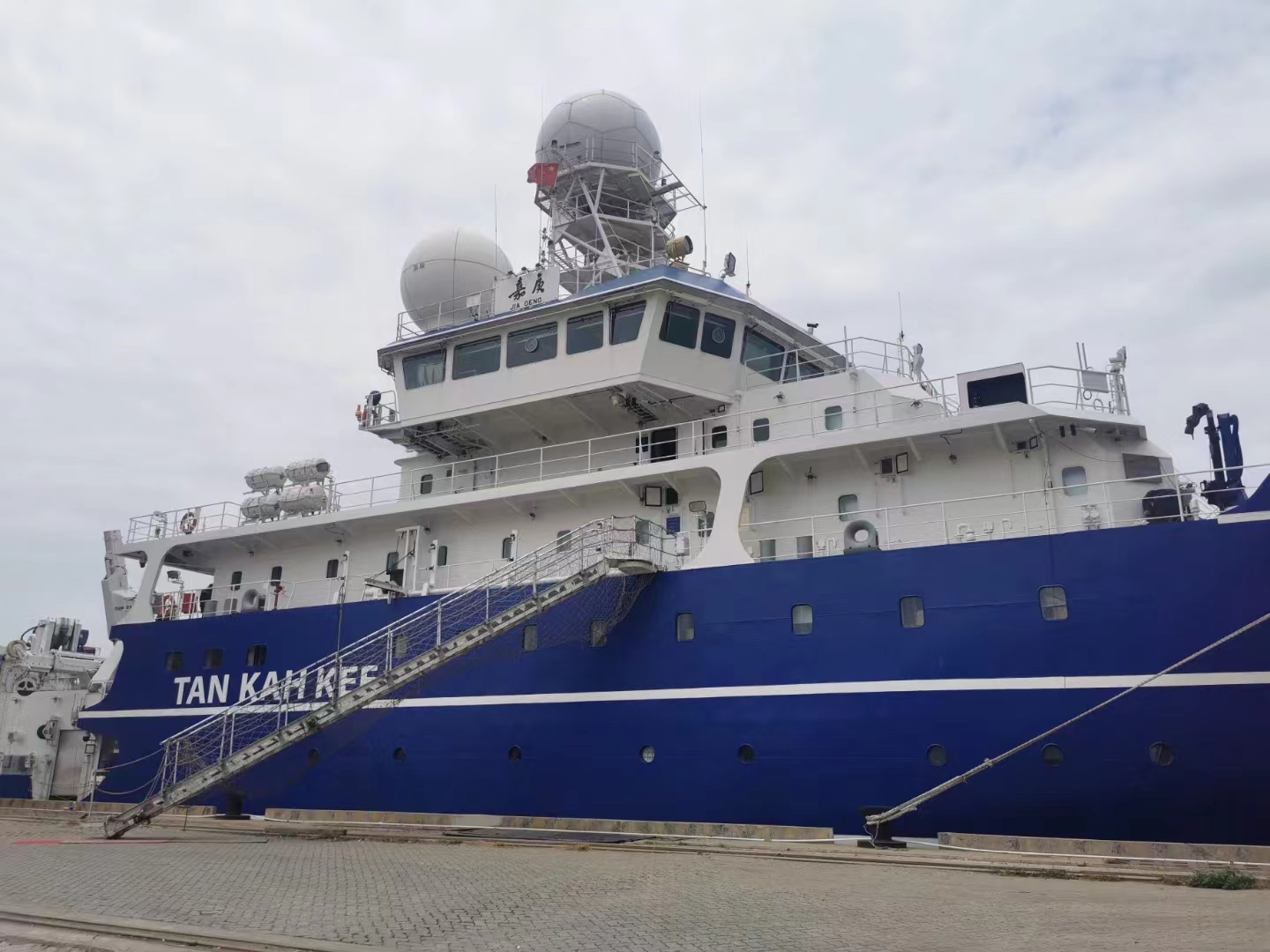
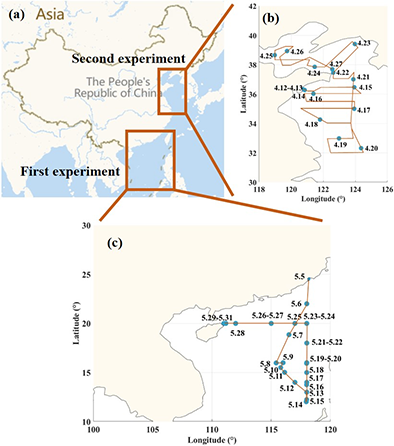
Figure 1 (a) Two experimental observation areas (b) Trails of the Yellow and Bohai Sea navigation observation experiment in April 2022 (c) Trails of the South China Sea navigation observation experiment in May 2021
Highlights and achievements
一
The spatio-temporal evolution driven by turbulent mixing under typical weather conditions
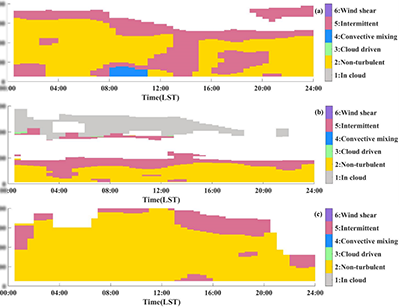
Figure 2 shows the spatio-temporal evolution driven by turbulent mixing under typical weather conditions, where (a), (b), and (c) represent the classification results under sunny, cloudy, and foggy weather conditions, respectively.
二
The contribution of turbulent vortex scale under the dominance of different turbulent driving sources
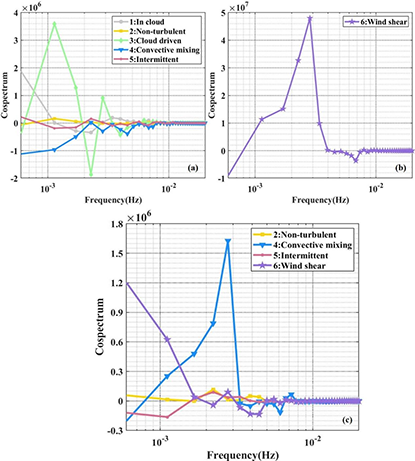
Figure 3 (a) (b) shows examples of turbulence co spectra for the Yellow Bohai Sea voyage and (c) South China Sea voyage (with an average time of 30 minutes), where gray dots represent turbulence in the clouds, yellow squares represent no turbulence, green diamonds represent turbulence driven by cloud top cooling, blue triangles represent turbulence driven by convective mixing, pink forks represent intermittent turbulence, and purple pentagrams represent turbulence driven by wind shear.
Article Information:
Wang, X., Dai, G., Wu, S., Zhu, P., Li, Z., Song, X., et al. (2023). Classification of turbulent mixing driven sources in marine atmospheric boundary layer with use of shipborne coherent Doppler lidar observations. Journal of Geophysical Research: Atmospheres, 128, e2023JD038918. https://doi.org/10.1029/2023JD038918



